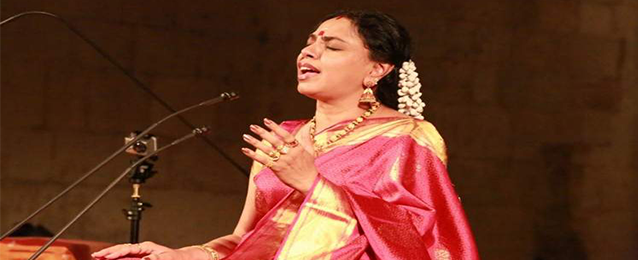Carnatic Vocal

Overview
Carnatic music, Karnāṭaka saṃgīta or Karnāṭaka saṅgītam is a system of music commonly associated with the southern India including the modern states Andhra Pradesh, Telangana, Karnataka, Kerala, and Tamil Nadu, but also practiced in Sri Lanka. It is one of two main subgenres of Indian classical music that evolved from ancient Hindu traditions, the other subgenre being Hindustani music, which emerged as a distinct form because of Persian and Islamic influences in northern India. The main emphasis in Carnatic music is on vocal music; most compositions are written to be sung, and even when played on instruments, they are meant to be performed in gāyaki (singing) style.
Important Elements of Carnatic Music
Śruti: Śruti commonly refers to musical pitch. It is the approximate equivalent of a tonic (or less precisely a key) in Western music; it is the note from which all the others are derived. It is also used in the sense of graded pitches in an octave. While there are an infinite number of sounds falling within a scale (or raga) in Carnatic music, the number that can be distinguished by auditory perception is twenty-two (although over the years, several of them have converged). In this sense, while sruti is determined by auditory perception, it is also an expression in the listener's mind.
Swara: Swara refers to a type of musical sound that is a single note, which defines a relative (higher or lower) position of a note, rather than a defined frequency. Swaras also refer to the solfege of Carnatic music, which consist of seven notes, "sa-ri-ga-ma-pa-da-ni" (compare with the Hindustani sargam: sa-re-ga-ma-pa-dha-ni or Western do-re-mi-fa-so-la-ti). These names are abbreviations of the longer names shadja, rishabha, gandhara, madhyama, panchama, dhaivata and nishada. Unlike other music systems, every member of the solfege (called a swara) has three variants. The exceptions are the drone notes, shadja and panchama (also known as the tonic and the dominant), which have only one form; and madhyama (the subdominant), which has two forms.
Raga system: A raga in Carnatic music prescribes a set of rules for building a melody – very similar to the Western concept of mode. It specifies rules for movements up (aarohanam) and down (avarohanam), the scale of which notes should figure more and which notes should be used more sparingly, which notes may be sung with gamaka (ornamentation), which phrases should be used or avoided, and so on. In effect, it is a series of obligatory musical events which must be observed, either absolutely or with a particular frequency.
Tala system: Tala refers to a fixed time cycle or metre, set for a particular composition, which is built from groupings of beats.[citation needed] Talas have cycles of a defined number of beats and rarely change within a song. They have specific components, which in combinations can give rise to the variety to exist (over 108), allowing different compositions to have different rhythms.

